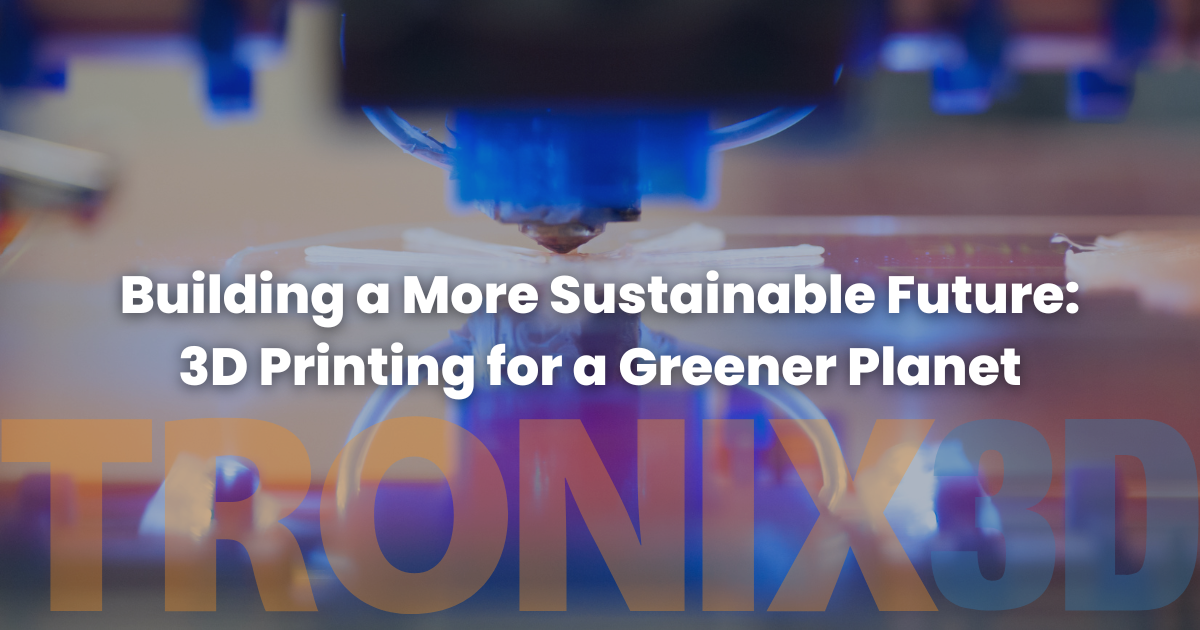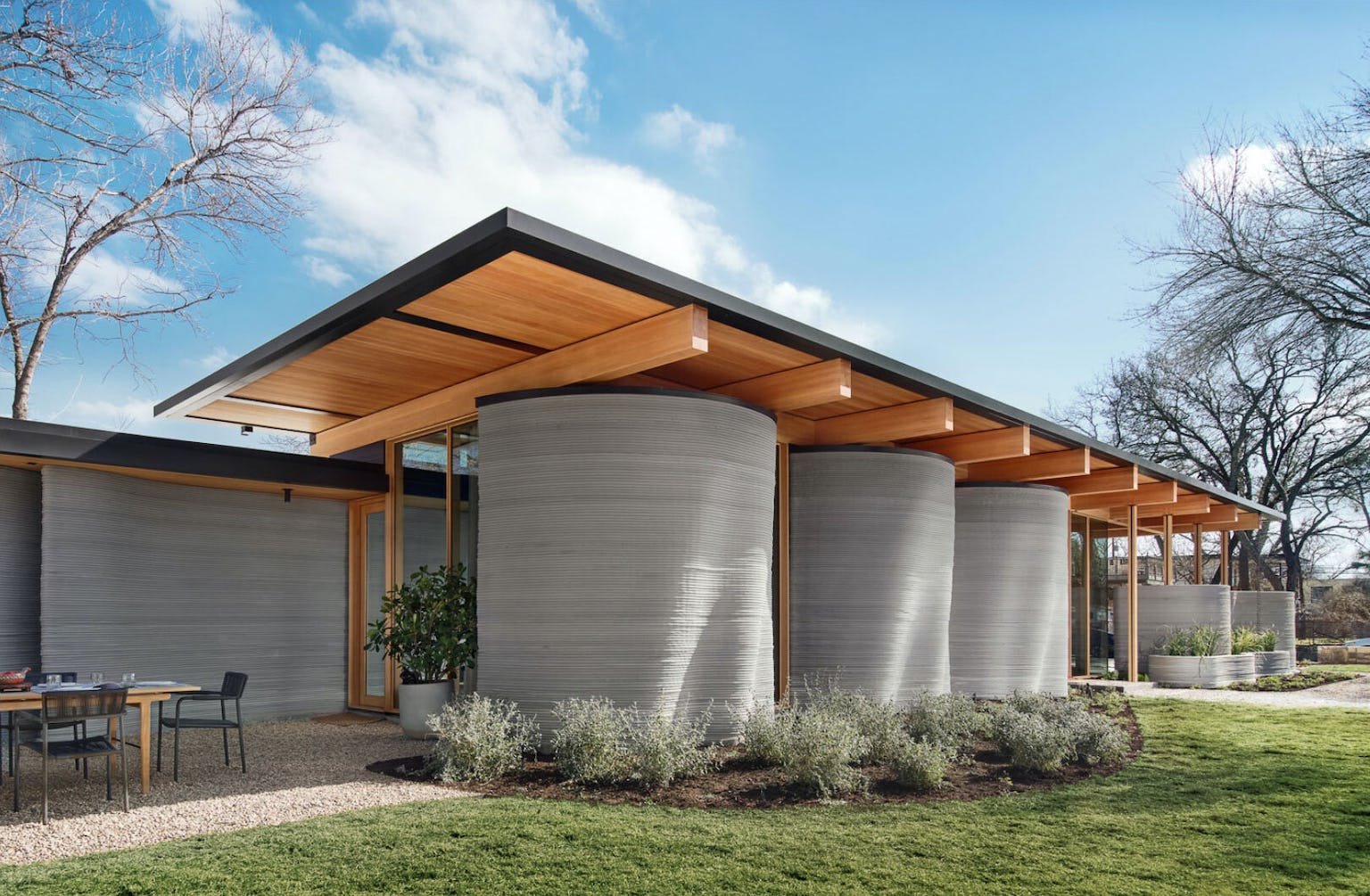Building a More Sustainable Future: 3D Printing for a Greener Planet
In a world striving for sustainability, 3D printing has emerged as a strong ally. This revolutionary technology isn't just transforming manufacturing processes, but it’s also making significant contributions to sustainable living and a greener world. In this blog post, we're going to uncover some of the surprising ways in which 3D printing is fostering eco-friendliness and supporting our journey toward a sustainable future.
Upcycling Waste into Wonder: How 3D Printing Encourages Waste Reduction
What if we told you that your waste products could be the raw materials for something new and useful? 3D printing allows for precisely this kind of upcycling. It has the potential to turn waste plastics into various items, from household goods to fashion accessories, thereby reducing the waste that ends up in landfills. For instance, a company named Reflow creates 3D printing filament from recycled PET bottles, giving a second life to what would have been waste. This eliminates some of the more wasteful practices of traditional manufacturing methods, therefore saving not just material but also significant costs in the long run.
Optimizing Resource Use: Material Efficiency in 3D Printing
Image via Adidas
3D printing is a champion of resource efficiency. Traditional manufacturing processes often involve cutting away material, whereas 3D printing adds material only where needed, drastically reducing waste. According to the U.S. Department of Energy, additive manufacturing can reduce material usage by up to 90%, making it a more sustainable option. Adidas' Futurecraft Strung shoe, for example, features a 3D-printed midsole made from recycled materials, highlighting the efficiency of additive manufacturing. Other footwear companies like Nike are also said to be following suit with the ISPA Universal, a 3D-printed shoe that combines AI design and eco-friendly materials.
Building Greener Homes: The Rise of 3D Printed Buildings
Image via ICON
Did you know 3D printing can build houses too? Better yet, it can do so in a more environmentally friendly way. 3D-printed buildings not only consume less material but are also quicker to build, reducing the carbon footprint of construction. Companies like ICON are paving the way, constructing affordable, sustainable homes using 3D printing technology. These high-performance homes showcase the perfect blend of architectural excellence, energy efficiency, resilience, and sustainability. Designed to showcase the digital possibilities of additive construction, these homes are crafted with minimal waste and maximum design freedom. That being said, the construction industry is bound to follow this trend on a larger scale once the adoption of this technology becomes more mainstream.
Creating a Circular Economy: 3D Printing and Repair Culture
3D printing also fosters a repair culture, which is integral to the circular economy. Broken household items can often be fixed by 3D printing a replacement part rather than buying a whole new product. This not only reduces waste but also cuts down on the resources used for manufacturing new items. Look at the initiative by a group called Disassembly 3D. They provide digital models of various common items, allowing anyone with a 3D printer to produce replacement parts. In fact, 85% of spare parts suppliers expect to adopt 3D printing as part of their manufacturing processes in the near future, according to an article by PwC. This encourages repairing over replacing, contributing to a more sustainable consumption model, and improving supply chain processes.
Pioneering Sustainable Energy: 3D Printing and Renewable Energy
The renewable energy sector is also harnessing the potential of 3D printing. Custom parts for wind turbines and solar panels can be produced on-site using 3D printers, reducing transportation and manufacturing energy. One company pioneering the adoption of additive manufacturing in this field is GE Renewable Energy. GE was granted a $6.7 million project by the US Department of Energy in February 2021 to explore the design and production of wind turbine blades using 3D printing technology. These blades, made from lightweight thermoplastic composites, offer several exclusive benefits such as increased power generation and reduced lifecycle costs for turbine operators. This not only holds promising implications for renewable energy but is also more accessible to remote communities.
The Green Revolution: Embracing the Power of 3D Printing
To wrap up, 3D printing is contributing to sustainable living and a greener world in surprising and inspiring ways. From reducing waste and optimizing resource use to fostering repair culture and supporting renewable energy, 3D printing holds enormous potential to help us build a sustainable future. As this technology continues to evolve, we can look forward to even more innovative and eco-friendly applications, truly making our world a greener place to live.
About Tronix3D
Tronix3D is a leading contract-based Additive Manufacturing company dedicated to providing exceptional low-volume production and prototype parts for a diverse range of industries. Our comprehensive services encompass mechanical design and consulting, specifically tailored to the unique requirements of additive manufacturing. Leveraging cutting-edge printing technologies such as HP Multijet Fusion (HPMJF), Fused Deposition Modeling (FDM), and Stereolithography (SLA), we deliver high-quality, precision-engineered solutions for our valued clients in the robotics, energy, medical, and defense sectors. At Tronix3D, we pride ourselves on our commitment to innovation, quality, and customer satisfaction, ensuring that our partners receive the best possible results for their projects. Discover more about our services and capabilities at www.tronix3d.com.




